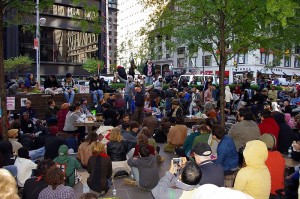Civil Disobedience
SHORTLY AFTER his 1983 appointment as archbishop of San Salvador during the Salvadoran civil war, Arturo Rivera y Damas traveled to the United States. Rivera succeeded Archbishop Óscar Romero, who was martyred for his outspoken condemnation of the war. I asked a Maryknoll sister—who lost three community members, killed by the Salvadoran death squads—to assess Rivera’s comments to the U.S. media. “He does not have the gift of martyrdom,” she said.
That comment gives perspective to the efforts of nonviolent peace activists in the U.S., many of whom have risked their freedom, usually for short stints, as a consequence of civil disobedience. In Crossing the Line: Nonviolent Resisters Speak Out for Peace, Rosalie G. Riegle chronicles the action-to-court-to-jail-and-prison journeys of some of the last century’s most committed pacifists. While a few told harrowing stories, for the vast majority the consequences fell far short of martyrdom. This is not to belittle their efforts, but rather to beg the question: Why do so few Christians resist the violence and war-making of the U.S. government?
Riegle’s well-done compilation of 65 oral histories might prompt more people to step into the fray. To date, hundreds of U.S. pacifists have served hundreds of years, mostly in federal prison, for crossing lines, burning draft cards and draft files, and hammering on the weapons of war. At press time, three Catholic pacifists known as the Transform Now Plowshares—Sister Megan Rice, Greg Boertje-Obed (interviewed in Riegle’s book), and Michael Walli—await a January sentencing for federal felony charges stemming from cutting fences and hammering at the Y-12 National Security Complex in Oak Ridge, Tenn.
OFFICER MARIO normally worked for Homeland Security. On this Friday night he’d been seconded to the Washington, D.C. Metro police, who had their hands full. Not only did they have the usual “drunk and disorderlies,” but now 54 people who looked like card-carrying members of the AARP were filling up their holding cells. Officer Mario, of retirement age himself, was feeling fortunate. He’d been assigned to the women’s side.
“Ladies, ladies, ladies!” Mario said, sauntering in with a mischievous smile. “This must be my lucky night.”
The evening before, we’d all been at St. Stephen and the Incarnation Episcopal Church running role plays on how to “flash mob” the corporate headquarters of Environmental Resources Management (ERM), the firm hired by the U.S. State Department to provide an environmental impact statement on the Keystone XL pipeline. To the disbelief and concern of climate scientists, ERM claimed that TransCanada’s Keystone pipeline would not significantly contribute to climate change. ERM was suspected of “misleading disclosures” regarding conflict of interest and material gain from the pipeline’s completion.
Our white-haired mob of mostly grandparents converged on ERM headquarters at noon to shine a light on such shady dealings. While six silver foxes blocked the elevators by chaining their arms together inside a PVC pipe, I watched two D.C. police lift Steve, age 70, and toss him into the crowd behind me. I knew this nonviolent civil disobedience wasn’t going as planned.

THOSE WHO BELIEVE in freedom and work for justice in our world sometimes grow nostalgic about the 1960s in this country, looking back at the leadership that emerged from African-American churches in the South, drawing allies from outside the region and beyond the bounds of creed. America has a vivid, living memory of faith inspiring public justice. But the civil rights movement did not just happen. The March on Washington and Selma were moments in history made possible by movements that grew out of hard work over the course of decades.
This summer in North Carolina, “Moral Mondays” at the state General Assembly have drawn thousands of weekly protesters, more than 800 of whom have been arrested for engaging in mass civil disobedience. A few weeks into the campaign, some elders started saying it felt like the ’60s all over again. The Washington Post highlighted NAACP state chapter president Rev. William Barber’s dynamic preaching. The New York Times pointed to the significance of hundreds of clergy uniting to lead the movement. MSNBC andFox News set up their satellite trucks. Week after week, thousands of people kept coming.
When reporters asked why, participants explained the concerns: 500,000 people denied health care when the legislature refused federal funds for Medicaid expansion, 70,000 people whose unemployment insurance was cut off, thousands of poor families denied an earned income tax credit, wholesale repeal of the hard-won Racial Justice Act, and diversion of public education funds through a voucher program. The reasons were legion, but they were not, by and large, unique to North Carolina. They were the sort of changes the American Legislative Exchange Council (ALEC) promotes at the state level throughout the country. How, then, did this grassroots resistance movement emerge in North Carolina?
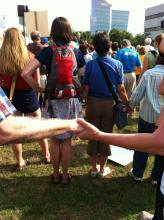
The throngs of demonstrators who flock to the grassy knoll outside the North Carolina Statehouse each Monday know the drill.
They listen to a fiery speech denouncing the Republican majority’s legislative actions. They sing freedom songs and chant civil rights slogans. Then they march two by two into the legislative building to be handcuffed by police and arrested for failing to obey orders to disperse.
Leading them in this weekly rite of nonviolent civil disobedience is the Rev. William J. Barber II, president of the state’s NAACP chapter. Since assuming the state presidency eight years ago, he has waged numerous battles challenging local and state governments to extend educational opportunities, broaden the voting base, provide health care, and more generally lift up the poor.
A Terrible Thing to Waste
Many U.S. children living in poverty are further penalized by struggling public schools. Nicole Baker Fulgham, former vice president of faith community relations at Teach for America, offers passionate, practical solutions in Educating All God’s Children: What Christians Can—and Should—Do to Improve Public Education for Low-Income Kids. Brazos Press
Holy Disruption
The documentary Bidder 70 tells the story of a different kind of civil disobedience: Tim DeChristopher helped save 22,000 acres of Utah wilderness by outbidding industry figures at a disputed Bureau of Land Management oil and gas lease auction, with no intention of paying or drilling. www.bidder70film.com
Rose Marie Berger writes in the May 2013 Sojourners magazine cover story, “For God So Loved the World,” that people of faith are key to reversing climate change. It will take a holy power shift to compel God’s people to care for creation and “launch an irresistible force for change.”
In creative and bold ways, people of faith from various religious traditions are doing just that. Together, they are raising their voices and taking action to address climate change.
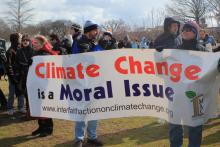
God’s creation is in danger; and to call upon the powers of the world to heal it, God’s people are prepared to go to jail.
Perhaps most famously in our recent history, the startling sight of a religious leader in jail was embodied in the willingness of Dr. Martin Luther King, Jr., to go to jail more than 20 times in order to embody his religious commitment to racial justice, peace, and nonviolence.
As we approach the Holy Week of Christianity and Passover, we should be aware that this tradition goes back thousands of years. The movement of ancient Israelites seeking freedom from a lethal Pharaoh began even before Moses, when two midwives – the Bible carefully records their names, Shifra and Puah – refused to murder the boy-babies of the Israelites as Pharaoh had commanded. The recollection of that moment is the first recorded instance of nonviolent civil disobedience.
When that cruel and arrogant Pharaoh, addicted to his own power, refused freedom to his nation’s slaves, his arrogance forced the Earth itself to arise in what we call the Plagues – ecological disasters like undrinkable water, swarms of frogs and locusts, the climate calamity of unprecedented hailstorms.
Passover has kept alive and lively the memory of that uprising. So it is not surprising that the Gospels record that just before the week of Passover, Jesus led a protest against the behavior of the Roman Empire, its local authorities, and a Temple he and his followers thought had become corrupted from its sacred purpose.
To protest against the Empire of his era, Jesus chose a time that was both appropriate and dangerous, since Passover celebrates the fall of Pharaoh. His challenge resulted in his arrest and imprisonment, and then his torture and execution.
Both Judaism and Christianity can trace their origins to acts of nonviolent civil disobedience. Indeed, for several centuries of Imperial Rome, the very persistence of Rabbinic Judaism and Christianity were collective acts of civil disobedience.
Today, religious folk face modern plagues imposed upon our countries and our planet by a new kind of Pharaoh.
New Abolitionists
Refuse to Do Nothing: Finding Your Power to Abolish Modern-Day Slavery, by Shayne Moore and Kimberly McOwen Yim, is a guide to how regular people, juggling the everyday demands of family and work, can become activists fighting human trafficking and slavery. IVP Books
Leaders of the Faith
Different writers pay tribute to the work and witness of Catholic sisters in Thank You, Sisters: Stories of Women Religious and How They Enrich Our Lives, edited by John Feister. These strong, faithful women are inspiring, no matter your tradition. Franciscan Media
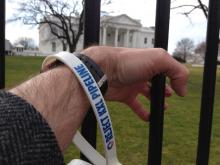
My wrist was cuffed to the White House fence next to the wrist of Robert F. Kennedy, Jr. Our nation’s chief climate scientist James Hanson stood next to me; Daryl Hannah sat in front of us. A few feet away, also cuffed to the fence, Julian Bond stood next to Bill McKibben and Michael Brune, Executive Director of the Sierra Club. Altogether, 48 of us from all over America obeyed our consciences. The days of safety and silence have ended. The time of pretending is over. Humanity will be held accountable for our desecration of creation. It is happening already.
And it was Ash Wednesday. When I mounted the platform to address the rally that preceded our civil disobedience, many were unaware that Lent was beginning. In the context of climate disruption, anyone who cares about creation can embrace the significance of Ash Wednesday. It’s a day of conscience, repentance, and conviction; a day when we take stock of our lives and our life together on the planet; a day when we confess our self-indulgent appetites, our intemperate love of worldly goods and comforts, and our obsession with consumption of every kind. For Christians, Ash Wednesday is a day to acknowledge that we are accountable to the God who gave us life and who entrusted the earth to our care.
Ash Wednesday is a good day to be arrested, I told the crowd. It’s a good day to realign our lives with God's desire to preserve this good creation. I invited any who wanted to receive ashes as a sign of their repentance to approach me on their way to White House.
ONE EVENING LAST July, I walked up to the Port Everglades U.S. border checkpoint in Fort Lauderdale, Fla., to intentionally turn myself in to U.S. Customs and Border Protection. My mission: to get into Broward Transitional Center, a privately run U.S. Immigration and Customs Enforcement (ICE) detention facility, to expose the stories of those held there. It's categorized by ICE as a model facility. But as I witnessed firsthand, it is nothing short of a prison where, as in the other 250 immigration prisons across the U.S., immigrants are arbitrarily held and exposed to all kinds of human rights abuses.
The total number of undocumented immigrants detained in the U.S. each year is sky-high—ICE detained 429,247 people in 2011 alone. In August 2011, the administration announced that it would focus its deportation efforts on people with criminal records. "Obama is only deporting gangbangers and felons," established immigrant advocacy organizations said. "He's our guy for immigration reform!"
But that is far from true. In my work with the National Immigrant Youth Alliance (NIYA), I keep hearing the real stories of immigrant prisoners and the loved ones from whom they're torn.
Getting detained was part of a strategy of civil disobedience that fellow activists and I have been pursuing since 2010: In order to pressure ICE and the government, we have to put ourselves on the line. I was one of two Youth Alliance activists who sought to infiltrate the Broward Center to find out the inside story. We also set up a telephone hotline, funded by donations from the community, to take calls from people detained in the center.
AMID THE COUNTRY'S serious fiscal problems, our $775 billion annual defense budget, not to mention our tens of billions of dollars spent on intelligence and other national security expenses, is treated as sacrosanct. Budget-cutters, especially on the Republican side, do not train their sights on the defense budget as they seek to address our flood of red ink, but instead focus on dramatic cuts in the safety net for the poor.
According to former Reagan budget director David Stockman, our $775 billion defense budget is nearly twice as large in inflation-adjusted dollars as the defense budget of Dwight Eisenhower for 1961, during the Cold War. Our FY 2011 defense budget was five times greater than that of China, our nearest competition for this dubious honor; constituted over 40 percent of the world’s entire military spending; and was larger than the cumulative budget of the next 14 nations in the top 15. All of this occurs at a time when our infrastructure is crumbling, our schools are sliding, and one-sixth of our population cannot find or has stopped looking for full-time work.
Stockman suggests that no plausible national defense goals today justify this level of defense spending. He rightly points out that “we have no advanced industrial state enemies” akin to the USSR of Cold War days. He argues that what in fact supports a budget of this size is an ideology of “neoconservative imperialism” and an attempt to function as a “global policeman” even after the world has “fired” us from this role.
IT'S BEEN ALMOST 45 years since nine Catholic peace activists entered a draft board in Catonsville, Md., filled two wastebaskets with military draft files, and burned the papers in a parking lot. What made the headlines especially big was the involvement of two Catholic priests, Daniel and Philip Berrigan.
For many people, me among them, the Catonsville raid was a turning point in our lives. It also triggered passionate debate about the limits of peaceful protest. Could property destruction be called nonviolent?
The prime movers of the Catonsville Nine were Phil Berrigan and George Mische. Mische had worked for U.S.-funded groups fostering labor movements in the Caribbean and Latin America. Phil had fought as an infantryman in World War II, where his courage won him a battlefield commission. Dismayed that the peace movement was having no discernible impact on events in Vietnam, Berrigan became convinced of "the uselessness of legitimate dissent." He opted for firing the cannons of civil disobedience.
Many U.S. troops were draftees; few had a longing to go to war in a country that posed no threat to the U.S. and whose borders most Americans couldn't find on a globe. The key role conscription played in keeping the war going made draft-board files an obvious target. One of the nine, Tom Lewis, called the files "death certificates."
Ever since the global financial cabal drove the world's economies into a ditch, popular movements have been rising up to fight "austerity measures" that exact punishment on the poor and leave the rich untouched. This is a familiar biblical meme for the definition of injustice. The words of the prophet Jeremiah come to mind: "Your clothes are stained with the blood of the poor and innocent" (Jeremiah 2:34).
"When Spanish mayor Juan Manuel Sánchez Gordillo recently led farmers on a supermarket sweep, raiding the local shops for food as part of a campaign against austerity, his political immunity as an elected assembly member protected him from arrest. He now asks other local mayors to ignore central government demands for budget cuts and refuse to implement evictions and lay-offs. In this era of austerity, such flagrant disrespect for the law ought to be encouraged. Sometimes, the greatest strength of popular movements is their capacity to disrupt. So here, for the benefit of imaginative indignados, are five examples of civil disobedience:
Civil disobedience hits the Alabama State Legislature today in opposition of the HB56 legislation on immigration. See the livestream for the latest updates:
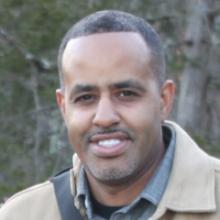
Last Thursday, Jan. 12, I was arrested in the Bronx for civil disobedience along with 43 others. It was a group that consisted mainly of clergy and church laity, a grassroots evangelical effort led by Bronx Councilmen Fernando Cabrera. Our protest was aimed at the city’s decision to prevent 160 churches from renting worship space in public schools beginning, Feb. 12.
I would like to clarify the nature of my involvement. I remain a proponent of healthy boundaries between church and state. The church I presently lead does not meet in a public school, and we’re not faced with an impending threat of relocation. My inspiration to protest began when I discovered how the city’s decision would affect churches in the Bronx — the poorest urban county in the country.
If New York City remains a trendsetter, a decision like this could lead to numerous copycat decisions in poorer districts all over the country.
We've compiled a list of links where you can learn more about the genesis of the #OccupyWallStreet movement, including links to news reports, organizations involved in formenting the movement and local groups in every state where you can get involved close to home (if you don't live in Lower Manhattan.)
Last Saturday, August 20, 2011, I got arrested. Having never been arrested before, it feels strange to write that. Like most Americans I associate getting arrested with committing egregiously unlawful acts that require punishment
As of yesterday, more than 1,009 Americans have been arrested to bring national attention to the controversial Keystone XL pipeline. This is what church looks like. Liturgy means "the work of the people" in service of the common good.
If President Obama permits the Keystone pipeline, thousands more will sit on his doorstep and in front of bulldozers. This movement doesn't have money to match the influence of oil companies, lobbyists, or politicians with conflicts of interest, but we do have our bodies and we are putting them on the line.
Here are what people of faith -- Jews, Christians, Buddhists, Quakers, Unitarians, and more -- are saying about why they have been or will be arrested to stop the Keystone XL pipeline:
This may be the largest use of civil disobedience yet around global warming.
The earth dries up and withers ... The earth is defiled by its people; they have disobeyed the laws, violated the statutes, and broken the everlasting covenant. - Isaiah 24:4-6
Today I have given you the choice between life and death, between blessings and curses. Now I call on heaven and earth to witness the choice you make. Oh, that you would choose life, so that you and your descendants might live! - Deuteronomy 30:19
During the 1980s, many Christians were at the forefront of a movement to avert nuclear annihilation. They saw this transcendent threat as a moral crisis and felt a responsibility to nonviolently resist, including acts of civil disobedience and divine obedience. Today, we face a comparable danger -- a climate catastrophe which could decimate life on earth. Yet it seems not to have been picked up on the Christian "radar screen" in the same way. For this reason, it is actually more insidious.
